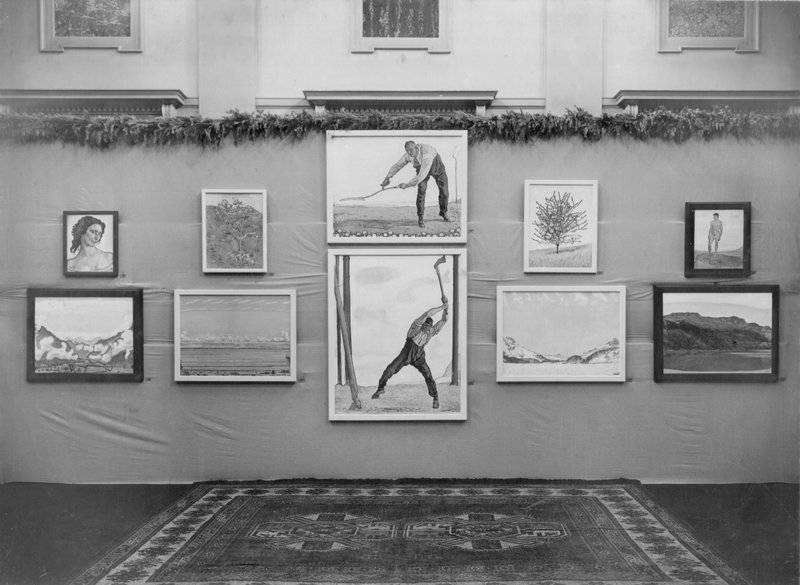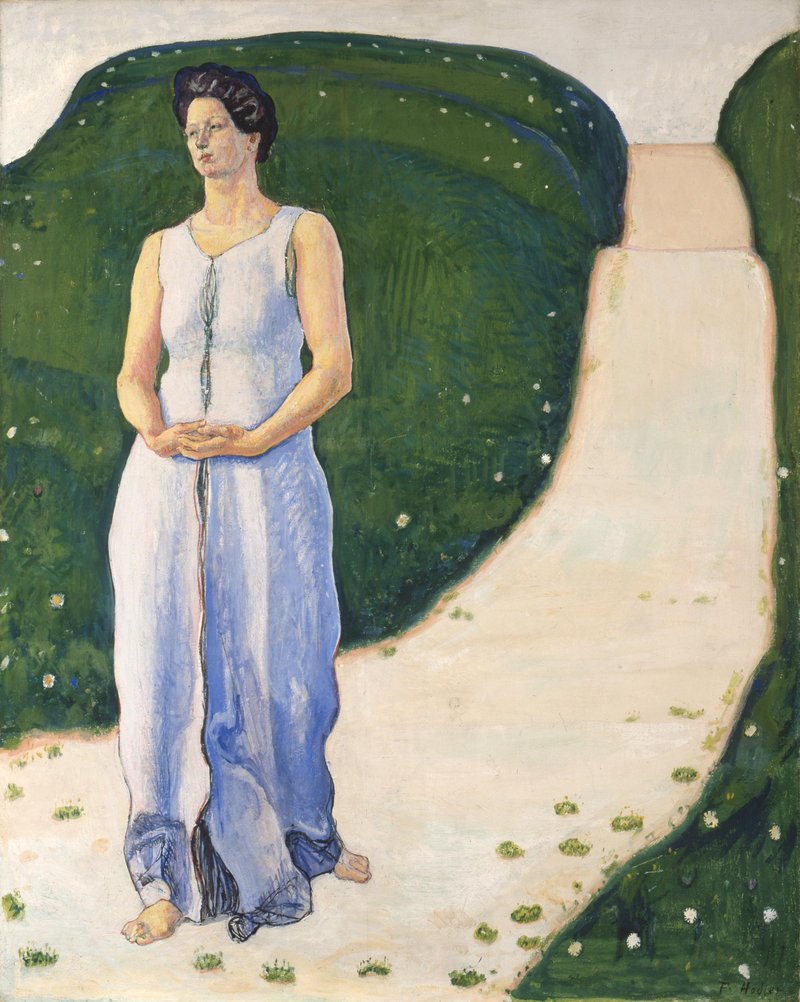How modernism came to Winterthur
In 1911, the town hall hosted an exhibition that gives us a nice insight into what was collected in Winterthur at the time. The show ran under the simple name Works of art from private collections in Winterthur. The scope was less modest, as almost 300 works were presented to the public in the so-called Petersburg hanging. Chronologically at the beginning was Anton Graff from Winterthur, an important portraitist of Goethe's time; towards the end, visitors were greeted by modern, colourful paintings: the latest in contemporary painting from Switzerland and Paris.

View of the wall with paintings by Ferdinand Hodler in the exhibition in the Stadthaus in 1911
Foto: Hermann Linck
There was an impressive Hodler wall with a woodcutter, landscapes and seascapes. There were also ten paintings by Giovanni Giacometti. The highlight, however, came from France: Bonnard, Roussel, Marquet and no fewer than fourteen paintings by Félix Vallotton were on display. It was here, at the latest that all visitors realised that things were different in Winterthur than in most Swiss cities.
A few of these paintings belonged to Richard Bühler and a few others to his brother Hermann. However, the majority of the modern French section came from the Villa Flora as part of Arthur and Hedy Hahnloser's collection. The exhibition made it abundantly clear that these two were the most progressive collectors in the city – and also that they influenced the entire city with their taste and priorities.
Almost everywhere in Switzerland, including Winterthur, the focus was on national, even regional art. If foreign art was collected, it was mostly by German artists. There were almost no galleries offering art from other countries.

Ferdinand Hodler, Abendruhe, 1904/1905
Kunst Museum Winterthur
Foto: Jean-Pierre Kuhn, SIK-ISEA, Zürich
The controversy surrounding a purchase is a good example of how fierce the rifts were at the time: when the Kunstverein purchased a work by Ferdinand Hodler, Abendruhe, in 1908, there was a huge outcry. There was argument and controversy not only on the board, but throughout the Kunstverein and also among the general public. There were newspaper articles and major debates. Arthur Hahnloser wrote to Ferdinand Hodler at the time: "The vituperation the Kunstverein's board has had to endure over the last two weeks because of the purchase [of the Hodler painting Die Abendruhe] surpasses anything that ever occurred before. We were almost alone against the big mob; one heard only talk of scandal, waste of money, bad taste and the board's hubris."
At the time, Richard Bühler wrote a passionate plea in favour of contemporary, modern art. Although the Hodler did ultimately find its way into the collection, the major dispute back then reveals the difficult environment in which modern painting found itself at the time and the great resistance it had to face. It also shows how open-minded and courageous individual members of the Kunstverein were – especially the Hahnlosers from the Villa Flora.


